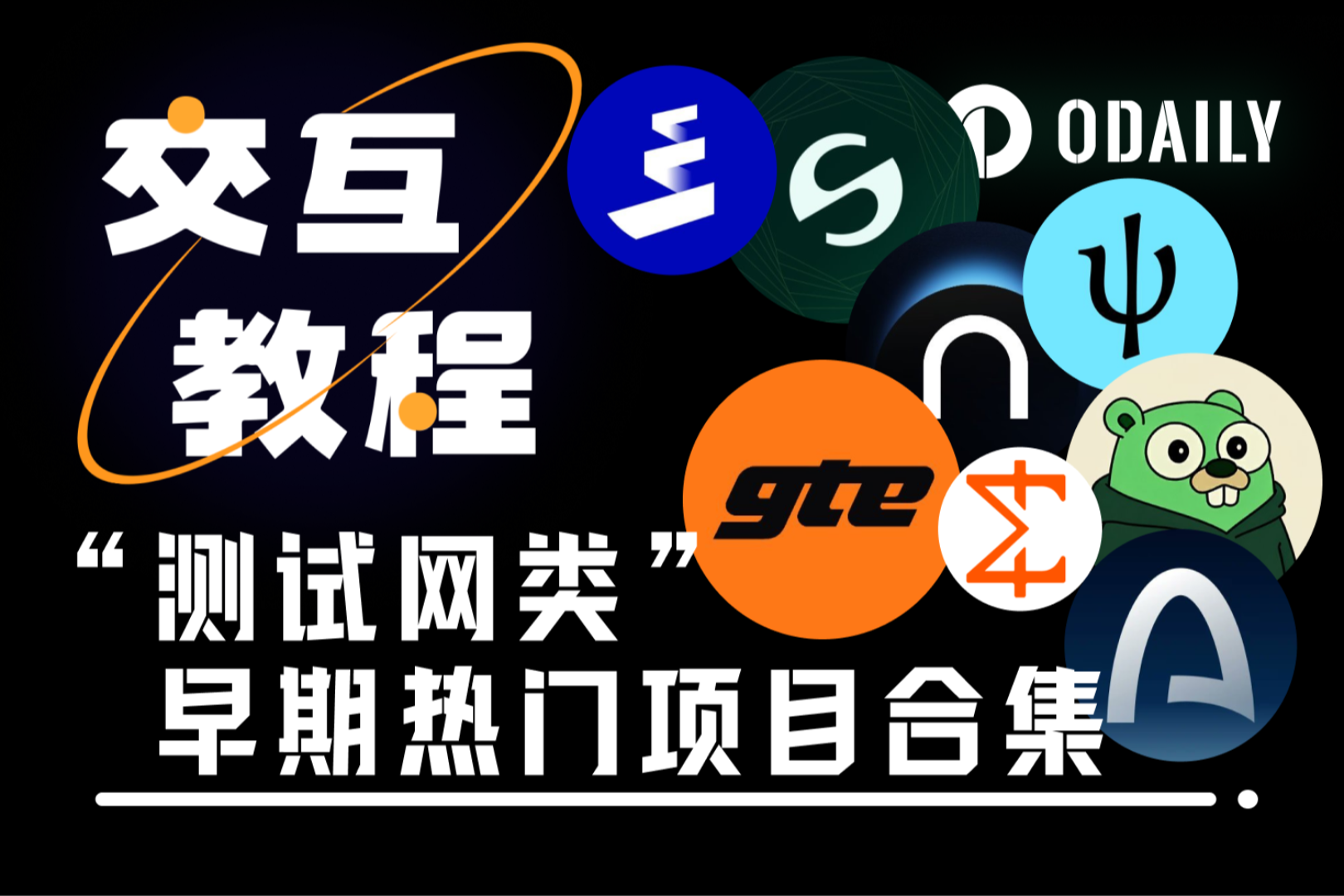A Deep Dive into DePIN: Decentralized Hardware Meets the New Data Economy
Original title: DePIN: Decentralized Hardware Meets the New Data Economy
Original author:PAUL VERADITTAKIT
Original compilation: Luccy, BlockBeats
Editors note: DePIN (Decentralized Physical Infrastructure Networks) is a decentralized physical infrastructure network. It encourages users to share personal resources through token incentives to build infrastructure networks, including storage space, communication traffic, cloud computing, and energy. and other fields. Simply put, DePIN uses a form of crowdsourcing to decentralize the infrastructure originally provided by centralized companies to many users around the world.
Pantera Capital Managing Partner Paul Veradittkit provides an in-depth discussion of DePINs core principles, representative projects, and its broad impact on the blockchain field. Paul Veradittkit explained the impact of DePIN on physical devices, data economy and decentralized governance through case studies of several typical DePIN projects, and pointed out that DePIN may become a turning point in the adoption of web3 in the real world .
This article originates from Paul Veradittkits personal blog, and will be summarized into a compiled collection of DePIN-related articles. BlockBeats will continue to update this collection. The following is the original text:

cover imagesource
introduce
DePIN, or Decentralized Physical Infrastructure Network, is one of the trends that has come to prominence over the past year. DePIN’s core promise is to bring the principles of blockchain applications—as community-owned, publicly verifiable, and incentivized applications—to the world of physical objects and infrastructure, whether it’s WiFi sites, security cameras, or computing servers. In this article, we will look at some of DePINs core principles, then delve into some of the most representative DePIN projects, and finally explore DePINs broader impact on the blockchain field.
Conceptualizing DePIN
DePIN covers a wide range of project types. From decentralized storage networks like Arweave and Filecoin, to decentralized WiFi connections like Helium, to community-provided software applications like Hivemapper, all are classified as DePIN. Messari made this observation in their groundbreaking DePIN report released in January 2023, which was groundbreaking in nature by dividing DePIN into 4 main areas: decentralized servers, wireless, sensors and energy networks.

Source: Messari. Retrieval date: November 11, 2023
From the projects and fields outlined by Messari, we can see that the original definition of DePIN emphasized the physical characteristics of the project to a great extent - that is, using sensors, servers and routers to build a decentralized Internet from the hardware level upwards stack. Since then, however, this common conception of DePIN has gradually expanded to include more consumer-oriented applications, such as TRIP, which aims to create a decentralized Uber. So this brings up a question: How do we begin to understand the concept of ‘DePIN’?
Therefore, our first task is to note the conceptual similarities between this set of items in the original Messari report and in the gradual evolution of this term. Many of these projects share some similarities, including collective ownership, distributed infrastructure costs, and economies of scale as more users enter the ecosystem. In fact, this can be summarized in Messari’s DePIN flywheel, explaining that this is enabled by token incentives.

Source: Messari. Retrieval date: November 11, 2023
The above-mentioned DePIN flywheel was originally conceived only to cover physical infrastructure networks, such as Filecoin and Helium. Users provide resources (disk space or WiFi connections) to the network and receive token rewards in return, allowing the network to have more capacity and attract more users.
However, this flywheel is not limited to hardware infrastructure; a similar argument can be made for data infrastructure. This will include projects that focus primarily on consumer data collection and coordination, leveraging blockchain and tokens as common interfaces to coordinate a new data-based economy. Examples of this include consumer-facing applications, such as the sensor network project Messari pointed out, and projects like the decentralized Uber, as well as potential enterprise applications of blockchain in supply chain or logistics management. use cases (although here, there is less focus on the financialization of tokens).
Therefore, one possible way to conceptualize the DePIN trend might be to fuse a decentralized hardware layer with a community-owned new data economy.
DePIN case study
Building on this general description of DePIN, we can now explore some of the most distinctive projects in the field.
Helium
One of the oldest and most visible DePIN projects, Helium was launched in 2013 as a company aiming to expand broadband infrastructure by allowing users to deploy LoRa gateways in a decentralized manner. In 2017, the network decided to jump on the cryptocurrency bandwagon and began offering cryptocurrency payments through its own L1 blockchain network.
Over the years, this approach has allowed Helium to become not only one of the representative projects of DePIN, but also the representative of the crypto industry more broadly. Many are calling it the “people’s network” because it is a major project where people can clearly see how tokens can be used to incentivize socially beneficial behavior. However, over time, both the Helium network and protocol have faced liquidity and adoption issues, and the networks weekly revenue has been steadily declining. Critics also point out that the networks use cases have been exaggerated and that incentives are unsustainable.

Data comes from Coinmarketcap, time range is February 2022 to March 2023, retrieval date: November 2023.
In April 2023, Helium completed the transition from its own L1 blockchain to becoming an application on Solana, a move it hopes will enhance reach and liquidity for its users and take advantage of Solanas high transaction throughput Expand.
This example from Helium highlights some of the key opportunities and risks within the DePIN space. Tokens can be very effective in initiating behavior for real use cases, but maintaining sufficient legitimacy and interest levels over an extended period of time is quite difficult. Furthermore, as L1 and L2 gradually consolidate, it is difficult to make an argument for running a chain independently rather than leveraging the scalability, infrastructure, and liquidity of another more widely adopted chain.
Hivemapper
Hivemapper is another outstanding DePIN project on the Solana network, aiming to create a decentralized Google Map. Basically, users of the project install dash cams on their cars and share live footage with Hivemapper, receiving HONEY tokens in return. The company then uses all this distributed data to build a decentralized map with an application API interface.

Source: Hivemapper Dashboard, as of November 11, 2023:https://hivemapper.com/explorer
Hivemapper’s main advantage over Google Maps is that, as a decentralized, token-incentivized network, it can complete the token mapping process in a cheaper and faster way. In turn, Hivemapper can break Google Maps monopoly by providing a cheaper API.
Hivemapper highlights DePINs core flywheel principle, where we use tokens to perform distributed, decentralized tasks in an efficient manner. Interestingly, in the original Messari report (January 2023), Messari described Hivemapper as a typical example of a sensor network [2]. However, one could argue that this does not fully capture the true innovation of Hivemapper.
In fact, Hivemapper’s core competency lies in the data infrastructure it collects—decentralized data from its network of users—and then monetizes that data infrastructure by providing API access. Of course, the project uses sensors and dash cams to collect this data; but thats just an accident. We can imagine that even if this data is not generated by a sensor network but is generated by other activities, such as browsing (as in the Brave browser), or even by users interacting with artificial intelligence, the same overall The model may still hold. DePIN uses token incentives to generate large-scale data in a decentralized manner (such as through a decentralized hardware network), thereby creating a new data economy.
Teleport
The importance of the new data economy is even more apparent in the case of Teleport, the decentralized Uber competitor on Solana. Through its recently launched (October 2023) application and participation in Solana’s Breakpoint conference [16], Teleport is a key component of “The Rideshare Protocol” (TRIP), which aims to create a fair and independent market without Intermediaries or centralized front-ends capture a significant portion of ride revenue (often up to over 40%) [17].
While the adoption and staying power of Teleport and TRIP remains to be seen, Teleport is an important case study demonstrating the importance of an open and decentralized “data marketplace” to the DePIN project’s value proposition.
IoTeX
IoTeX is another key player in the DePIN space, highlighting the benefits that combining blockchain technology with decentralized hardware devices can have on society in different dimensions, namely those of security and privacy. IoTeX’s flagship product is Ucam, a home security camera accessible only to the user, whose data is protected by the encryption and immutable properties of blockchain [19].
As the overall DePIN trend has grown over the past year, IoTeX aims to not only build specific smart devices, but also build an open network of IoT devices and promote the MachineFi concept. However, as the Helium story illustrates, in the context of the consolidation of the overall L1 scenario, even if DePIN provides strong consumer use cases and application layers for blockchain, it is difficult to make an argument for an independent and professional network and Directing liquidity in such an ecosystem becomes increasingly difficult.
Wider ecosystem impacts
Over the past year, DePIN’s growth has had a considerable impact on the overall blockchain ecosystem. One of the most important reasons is that DePIN is a consumer-facing application layer, similar to DeFi, gaming, and social, with the potential for mass adoption and the potential to drive consumer demand for the underlying chain or ecosystem.
As the examples above show, Solana appears to be a chain with significant activity in the DePIN space, and there are other players such as IoTeX who are trying to build novel alternative solutions customized for DePIN. As an application layer that interacts with large numbers of users and IoT devices, there will likely be a need for high-performance and composable chains—both capable of carrying the load of large numbers of consumers and in general-purpose languages such as Rust and WebAssembly. to easily run on IoT devices.
Additionally, the growth of the DePIN trend has downstream impacts on decentralized governance. Since it is fairly common practice for decentralized autonomous organizations (DAOs) to coordinate token-based voting after a token is launched, many high-profile DePIN projects appear to have DAO governance on their roadmaps.
Most of the current well-known DAOs, such as Uniswap, Compound and MakerDAO, deal almost exclusively with digital or financialized assets. But as the DePIN project matures and gradually hands over its governance to the DAO, the need for the DAO to coordinate the purchase, use and maintenance of physical equipment will continue to increase, whether it is servers, sensors or hard drives. Therefore, DePIN has the potential to become a trend that expands the governance responsibilities of DAOs from digital assets to physical assets, ultimately creating tasks that may require DAOs to operate and behave more like traditional companies. In the long run, this may be a turning point in the adoption of web3 in the real world.



